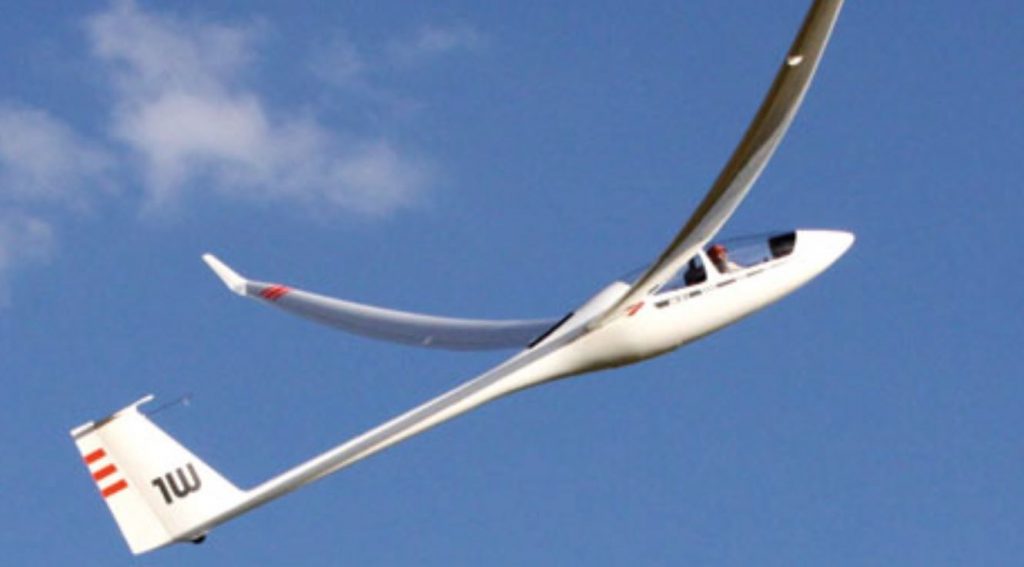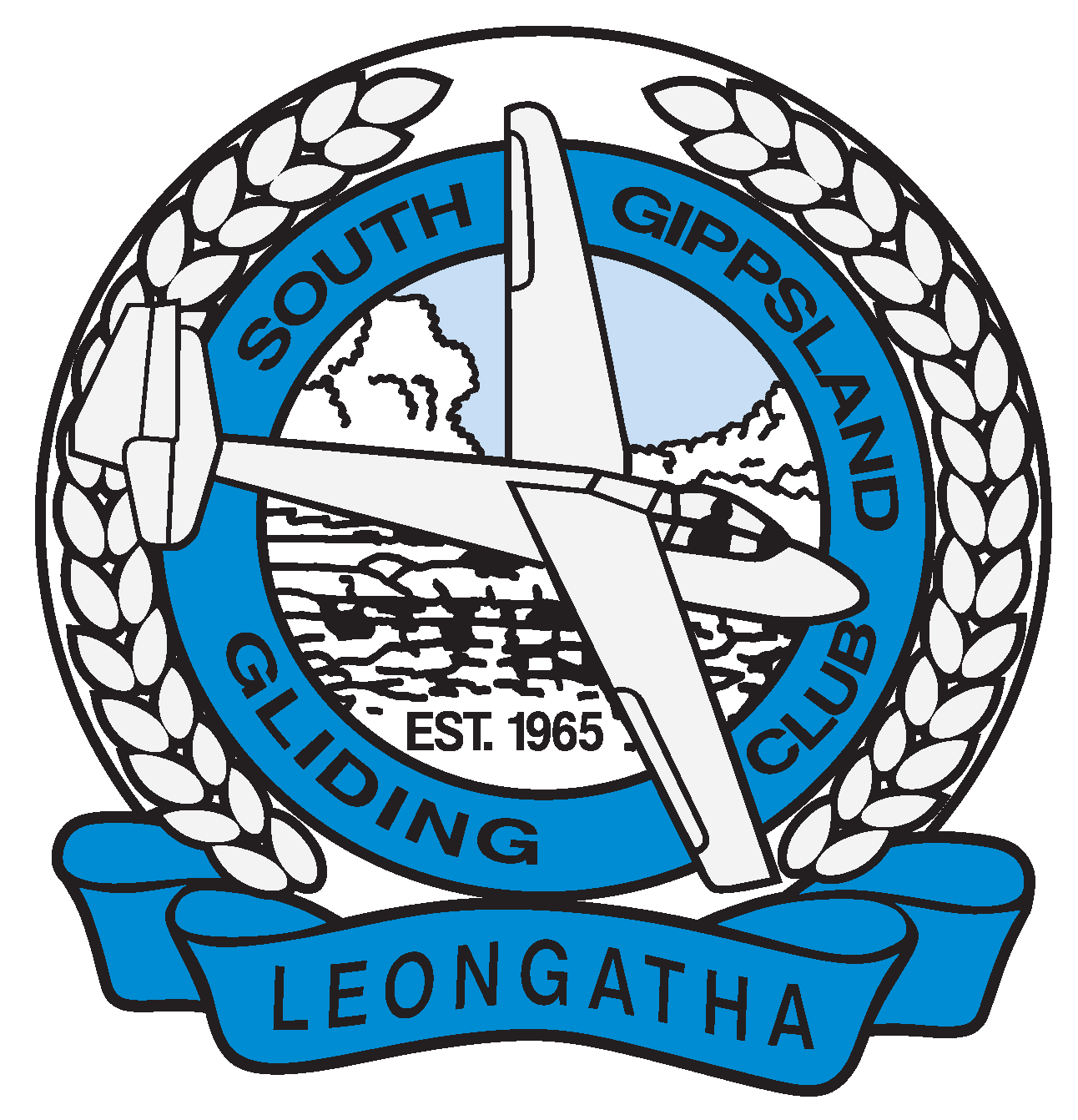5. Some Notes on the Use of Air Brakes
Grob 103 Twin Astir & Grob 102 Astir CS
The Flight Manuals for the Club’s Astirs, the Twin Astir and the single-seater Astir CS indicate that the air brakes can be used up to the maximum speeds of each glider, i.e. Vne – 135KTS.
For the Astir CS in a 45DEG dive and air brakes fully extended, the aircraft will stabilise at or below 108KTS. For the Twin Astir in a similar 45DEG dive, the air brakes will limit the speed to under Vne – 135KTS for all weights up to the maximum.
The air brakes may be used up to Vne for both aircraft. (See comments Extending the Air Brakes).
For most of our flying, the use of the air brakes is limited to the final phase of the approach to land, normally at speeds that might commence from a maximum at say 70KTS and reduce to the stall and below after the aircraft touches down. Beyond half way, the air brakes on the Twin Astir engage the wheel brake to stop the ground roll.
Increase in Stall Speed
In both Astirs, from straight and level flight, stall speeds are increased by about 5 – 6KTS with dive brakes fully extended. For the Twin from ~40KTS to ~46KTS and the Single CS from ~33KTS to ~38KTS. The actual amount is determined by the all up weight of the glider at the time but these figures are close enough. Attention to the Safe Speed near the Ground (Vs+½ WV) will maintain a safe margin until you commence the round out prior to touch down.
With dive brakes extended, the stall speeds will be further increased in turning flight in proportion to the angle of bank. It is not recommended to have air brakes extended in turns from Downwind to the Base and the Finals positions. Close them in the turn and take them out again when wings are level.
Landing Approach
While any amount of air brake may be used in the approach to land, the more air brake, the greater the rate of descent and the more nose down attitude required to maintain a selected speed. And conversely, the greater the rotation for round out to stop the rate of descent to touch down gently.
In the Twin, it is not advisable to have more than half air brake extended in the final phase of the approach as the rate of descent cannot be checked in time for a nearly level and simultaneous main and tail wheel contact with the ground – the proper landing configuration! The higher the nose attitude, the more pronounced will be the tail wheel hitting first and accentuating main wheel contact with structural damage likely. More than half air brake will have the main wheel locked further exacerbating the situation.
In the Astir CS, the same situation with air brake applies but the nose up attitude for touch-down is slightly higher than for the Twin (but not much!).
In the very last phase of the approach in both aircraft, it is best to have no more than half air brake and not to open them more until you are on the ground. In the case of the Twin Astir, it engages the wheel brake but in both aircraft, it will “dump” lift and keep you on the ground, all the more so if the wind is gusting severely. In this case stay in the aircraft until help arrives. Many a glider has been turned onto its back by gusting winds.
Extending the Air Brakes
At circuit speeds, below about 70KTS, once the geometric lock on the brakes is broken, the movement of the air brake lever to any position occurs more or less without change in pilot effort. However the brakes will move to fully open if you take the hand off the lever.
On the approach to landing and especially on the finals leg, once the brakes have been opened past the geometric lock, do not fully lock the brakes again until the end of the ground roll. Close them if necessary but do not lock them! Re-opening the brakes from the fully locked position requires some force and may result in far more air brake than was needed and precipitate pilot induced oscillations.
At slow speeds, once the lock has been broken even though the brakes may not have been extended, the sprung loaded top plates on the brakes will be slightly proud in the air flow and hence provide a very minor braking effect. At some speeds, the plates may vibrate quite loudly in this position.
As speeds are increased the tendency for the brakes to open quickly and fully will become pronounced: so much so that at speeds progressively above 70KTS and especially up to Manoeuvring Speed (for both aircraft 92KTS). Once the geometric lock is broken, the brakes are capable of opening quite forcefully.
For the Single Astir CS, the Flight Manual states that it is best to have the air brakes open below 86KTS if speeds up to Vne are contemplated. The Twin Astir Flight Manual is silent on this but prudence would indicate the same rule be observed. Even at this speed, care (and some arm strength both ways) is needed to prevent a violent opening of the brakes.
The air brakes can be opened at any speed but the faster you are, the greater the care necessary to prevent a violent opening. If either aircraft exceeds Vra, the air brakes should be opened to reduce speed.
Above Cloud?
Whilst it is never recommended to fly above a full cloud
cover, to transition to below that cloud if you get caught out, the process is
to extend the air brakes fully, trim full nose down and hands-off, allow the aircraft to stabilise in its descent. Once
clear below cloud, resume normal flight!
Bending Wings
Note also, that as the airspeed on both aircraft increase, so the wings bend upwards more and more. The lock efficacy is reduced and the brakes will therefore open with reducing effort from the pilot. It is possible that at the highest speeds and +ve G the brakes could open of their own accord.

You can see what I mean by bent wings and this aircraft is not at its limits! Next time you take a trip overseas, check out how much the wings on your Boeing or Airbus bend up during the take-off run – the tips move up about 10 feet while the ultimate load is around 26 feet for the Boeing 787!
A Little More Food for Thought
Entry to a loop is made from a dive to about 95 – 100KTS (95KTS is adequate), the aircraft is levelled out momentarily and the control column pulled back progressively to fully aft (by the time the aircraft is going through the vertical). The stick is then eased forward a little as one is inverted (and slowest) and then progressively fully aft (by the time the nose is vertically down) for the remainder of the loop back to straight and level where the speed should be in the order of 95 – 100KTS again. About +3G is pulled in this loop.
From inverted at the top of the loop to S&L, the aircraft will pick up at least 50 – 70 KTS. So if you have 50KTS at the top (inverted) you will end up with 100 – 120KTS and this is getting very close to Vne. It is not advisable to enter a loop above the recommended entry speed as exit speed could be in excess of a safe speed with higher pull-out +ve G loading as well.
And this is Serious!

For -1G “normal” inverted flight, compared to the usual upright S&L +1G, the nose of the aircraft must be quite high. Two things are noticeable; the stick position has to be well forward and with you hanging in the straps and most likely slipped away from the control column a little, this is not easy. The second consideration is that your stall speed is now at least 60KTS and you will be flying at 70+KTS. If you have arrived inverted by mistake, your nose attitude will likely be somewhat lower than in this diagram and you will be faster as well. Being inverted, the chances are that you will not be able to identify the ASI, letalone read it!
From this position you will have a wonderful view of the ground and the temptation to pull through to set the earth in its right place can be overwhelming. Starting from say 75 – 85KTS and picking up another 60 – 70KTS in the process, you have every chance of rocketing through Vne and tearing the wings off.
How do you recover to normal flight? If you find yourself in this situation; never pull through: instead push and roll out!
Push and keep the nose of the aircraft at least up to the horizon and with full aileron for the whole time, roll out. You will need to start rolling with some opposite rudder (this is not intuitive) and then reverse it to apply top rudder as the wings go through the vertical. Even if you don’t get the rudder right, keep the nose above the horizon at all costs until the world is the right way up.
Note: This is not a briefing on aerobatics but aerodynamic information to enhance your general knowledge. Aerobatics are a totally separate subject. It is by far the safest not to try any aerobatics until you have been fully briefed and shown the necessary techniques.
Some Relevant Numbers Information:
From ground level up to 6,500’ Vne is 135KTS. From that height, it reduces progressively to 109KTS at 19,000’.
Similarly G limits reduce from +5.3/-2.65 at Vra (<92KTS) to +4.0/-1.5 at Vne (<135KTS) for both aircraft with air brakes closed! Check the Flight Manual for the precise details.
The Flight Manuals for each aircraft are the authority for all speeds and G limits. And anyway, all these figures are LIMITS, not CHALLENGES.
| For all these definitions and how to understand them, Australian Gliding Knowledge (pages 169-174 and p275) is the reference. The Flight Manuals provide the aircraft specific figures. |
Vs = Stall Speed
Va = Manoeuvring speed
Vra = Max Smooth Air Speed
Vne = Never Exceed Speed
Vs + 1/2 WV = Safe Speed near the Ground
+1G Upright Stall Speeds ~40 KTS
-1G Inverted Stall Speeds ~60 KTS
Va and Vra are theoretically different events but can be the same number as is the case in the Twin Astir – 92KTS.
In the Astir CS however, Va (Manoeuvring Speed) is 92KTS while Vra (Max Rough Air) and Vne (Never Exceed) are the same figure at 135KTS.
This emphasises the need to understand the differences and how to deal with them – go back to Australian Gliding Knowledge and the placards in the aircraft!
(Oct 2019)
